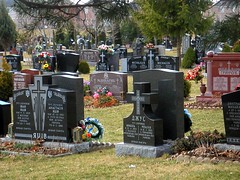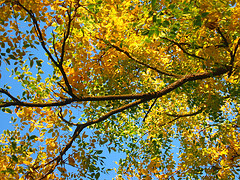The environmental movement has inadequately addressed issues of race, class, and sexuality. The feminist movement has only recently identified the need to consider race, class, and sexuality, and made concentrated efforts to be inclusive in their concerns, structures, and practices. As the environmental movement faces increasing pressure to align itself with social justice issues and to adopt a human welfare ecology model, the relationship of environmental degradation and human degradation will come more and more to the forefront.
Dorceta Taylor identifies that the environmental movement’s early history focused on issues of conservation and recreation (53). These were issues of concern primarily to white, middle-class people with disposable income and time for leisure. Some people interpreted this as people of colour’s apathy regarding the environment (Taylor 58, Seager, 182). Their issues sat outside recreation and leisure, instead focusing on community survival and social injustice. The narrow focus of the early environmental groups resulted in a movement that precluded the participation of people of colour. The founding environmental movement had a romanticized notion of the wilderness and a need to protect and preserve it as a place of relaxation and freedom. It was not until the 1980s that environmentalists’ interest turned to social justice and human welfare ecology (Taylor, 53). When environment was redefined as the space around us, rather than a romanticized, distant place, people of colour and of lower socio-economic status identified the environmental hazards and toxic dumping grounds, which poisoned their work and home lives as environmental issues (Seager 183, Taylor 54).
The environmental movement has a history of tokenism. Many environmental groups have wanted to present a face of diversity without adopting inclusive mandates and projects. Discrimination also takes the form of groups looking for ‘white’ people of colour: those who are English speakers, educated in the West, and who are less likely to challenge the status quo of a mostly white group, concerned with mostly white issues.
The least powerful people in society are the hardest hit by environmental degradation (Alston and Brown 179). Alston and Brown identify the less powerful as those populations who are non-white, uneducated, and/or have lower socio-economic status (Alston & Brown 179). Often this family will be forced to choose between earning a living and protecting themselves from environmental health risks. These groups face a greater risk of exposure to toxins, environmental hazards, and mysterious illnesses (Taylor 54). Environmental groups are only just recognizing technology practices that place marginalized groups in proximity to dangerous toxins.
War causes death and the environment is among the casualties. Procedures like the “scorched earth policy” cause massive deforestation (Alston & Brown 180). War also causes soil erosion, climate changes, a destruction of natural resources, and water shortages, leading to disease (Alston & Brown 180). Wars displace people to urban areas further stressing the land. The lasting effects of chemical defoliants and weapons cause birth defects (Alston & Brown 180). The victims of war suffer during and after war: deaths of loved ones, loss of property and for women war often brings rape and pregnancy. Treatments and surgeries for diseases and birth defects are only available to those with resources. Most victims cannot afford treatment which making class an environmental justice issue. Environmental groups are realizing the relationship between the environment and victims of war. Newly politicized groups like Doctors without Borders realize that they cannot heal people who are surrounded by warfare and lacking resources like clean water.
Less powerful groups of people are often exploited for their land and resources. No one asked the First Nations people of (now) Nevada to allow underground nuclear testing on their land (Alston & Brown 183). They and many other indigenous groups have seen their land destroyed by nuclear weapon testing (Alston & Brown 183). International waste trade ships the refuse from privileged groups to other countries that are only beginning to object (Alston & Brown 185). Medicinal flora is harvested and patented by industrialized countries without consultation with the indigenous people who cultivated its use in health and healing (Alston & Brown 190-91). All of these practices exploit marginalized groups for the profit of others. These environmental issues need attention.
There are still women’s issues that need attention. Sexual health issues, for example the impact of xenoestrogens on women’s reproductive health, have barely been addressed. Also saddening is the history of sexism in the environmental movement. As issues are mainstreamed, men take over and profit from women’s volunteer grassroots organizing (Seager 178). The environment is big business and men run the large environmental organizations (Seager 178).
Women’s experiences of oppression share many parallels with the experiences of marginalized people and the environment: the story of exploited people and resources. As environmental activists realize that environmental justice is interlinked with social justice they will be able to learn from the lessons of the feminist movement. The lessons from and the politicization of women’s lived experiences (Heller 41-42) demonstrate the need to make room for the lived experiences of people of colour and people with less privilege (Taylor 58). As we approach this reality, the same dilemma will face the environmental movement that faced feminists: uniting people in different geographic locations, with differing concerns and facing different barriers, but all at the hand of those with power. Combined with the necessity of the privileged to reject middle-class consumption, it is through alliances that environmental recovery will be possible.
Works Cited
Alston, Dana & Nicole Brown “Global Threats to People of Color”
Confronting Environmental Racism: Voices from the Grassroots. R.D. Bullard, Ed. Cambridge, MA: South End Press. 1993. 179-194.
Heller, Chaia. “Reflection on the Ecofeminist Desire for Nature”
Ecology of Everyday Life: Rethinking the Desire for Nature. Montréal: Black Rose Books. 1999. 39-66.
Seager, Joni. “The Ecology Establishment.” Earth Follies: Coming to Feminist Terms with the Global Environmental Crisis. Kentucky, USA: Routledge. 1994. 167-221.
Taylor, Dorceta E. “Environmentalism and the Politics of Inclusion”
Confronting Environmental Racism: Voices from the Grassroots. R.D. Bullard, Ed. Cambridge, MA: South End Press. 1993. 53-61.
 Comments(4)
Comments(4)

